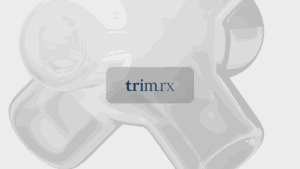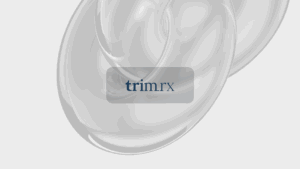What Happens If You Don’t Inject Ozempic Deep Enough?

When it comes to managing weight and diabetes, medications like Ozempic (semaglutide) play a pivotal role in many individuals’ treatment plans. However, the effectiveness of these medications can be influenced by how they are administered. One common concern that arises among users is: What happens if you don’t inject Ozempic deep enough? This question is not just about the immediate effects of a shallow injection but also about how it can impact the overall treatment journey.
In this blog post, we’ll delve into the intricacies of subcutaneous injections, specifically focusing on Ozempic. We will explore the importance of correct injection techniques, what to expect if the injection isn’t deep enough, and how it can affect the medication’s efficacy. Together, we’ll ensure that you feel empowered and informed about your weight loss journey and the role of medication in it.
Introduction
The advent of injectable medications like Ozempic has transformed the landscape of weight management and diabetes care. With its ability to mimic the natural hormone GLP-1, Ozempic helps regulate appetite and blood sugar levels effectively. Yet, even with effective medications at our disposal, the way we administer these injections can significantly influence their effectiveness.
Have you ever experienced a bump after an injection? Or perhaps you’ve wondered whether a shallow injection could alter the intended effects of your dose? These are pertinent questions that many users face, especially those new to self-injections.
In this article, we’ll guide you through the essential aspects of injecting Ozempic and what happens if you don’t inject it deeply enough. We aim to provide you with a comprehensive understanding of the injection process, ensuring you can maximize the benefits of your treatment while minimizing any potential issues.
We’ll cover the following key areas:
- Understanding Subcutaneous Injection: What it means and why depth matters.
- Injection Techniques: Proper methods for injecting Ozempic.
- What Happens with Shallow Injections: Effects on absorption and efficacy.
- Addressing Common Concerns: Bumps, bruising, and other side effects.
- Best Practices for Success: Tips to ensure effective injections.
- The Role of TrimRx: How we support your weight loss journey with personalized plans.
By the end of this post, you’ll have a clear grasp of the importance of injection depth and practical strategies for ensuring you get the most out of your Ozempic treatment.
Understanding Subcutaneous Injection
Subcutaneous injections involve delivering medication into the fat layer just beneath the skin. This method is preferred for medications like Ozempic because it allows for a slower absorption rate into the bloodstream, which is crucial for maintaining stable blood sugar levels and managing weight effectively.
Why Depth Matters
The depth of the injection plays a critical role in how well the body absorbs the medication. Injecting too shallowly can lead to several complications:
-
Delayed Absorption: If the medication is not injected deep enough, it may not reach the intended fatty layer. This can result in slower absorption rates, potentially delaying the medication’s effectiveness.
-
Inconsistent Blood Levels: Shallow injections can lead to fluctuations in blood levels of the medication, which may not provide the steady control needed for optimal results.
-
Injection Site Reactions: Shallow injections can cause localized reactions such as lumps or bumps at the injection site, which may be uncomfortable and concerning for users.
Understanding these aspects underscores the importance of proper injection techniques to ensure that the medication works effectively.
Injection Techniques
Proper administration is crucial for achieving the desired results from Ozempic. Here are some steps to follow for effective injections:
Preparing for the Injection
- Wash Your Hands: Always start by washing your hands thoroughly to prevent infection.
- Gather Your Supplies: Ensure you have your Ozempic pen, alcohol swabs, and a sharps disposal container ready.
- Check the Medication: Inspect the Ozempic pen for any discoloration or particles. It should be clear and colorless.
Selecting the Injection Site
The most common sites for subcutaneous injections include:
- Abdomen (avoiding the area within 2 inches of the navel)
- Thigh (front or outer part)
- Upper outer arm
Rotating injection sites is recommended to prevent tissue damage and ensure consistent absorption.
Performing the Injection
- Clean the Area: Use an alcohol swab to clean the injection site.
- Pinch the Skin: Pinch the skin together to create a fold. This helps ensure the needle goes into the fatty tissue rather than muscle.
- Insert the Needle: Insert the needle at a 90-degree angle to the skin surface for most users. If you are thin, a 45-degree angle may be more appropriate.
- Inject the Medication: Press the button on the pen to administer the medication. Hold the needle in place for a few seconds after injecting to ensure the full dose is delivered.
- Dispose of the Needle Properly: Use a sharps container to dispose of the needle safely.
By adhering to these techniques, you can maximize the effectiveness of your Ozempic injections and minimize complications.
What Happens with Shallow Injections
A common concern is what occurs if the Ozempic injection is not delivered deep enough. The impact of a shallow injection can vary, but here’s what you might experience:
Reduced Efficacy
When injected superficially, the medication may not be absorbed as quickly or effectively. This can lead to:
-
Delayed Onset of Action: Users may notice that the expected effects of the medication take longer to manifest, leading to potential fluctuations in blood sugar levels.
-
Unpredictable Results: With inconsistent absorption, the user may experience varying levels of appetite suppression or glucose control, making it harder to manage their condition effectively.
Local Reactions
Shallow injections can also lead to localized reactions such as:
-
Lumps or Bumps: These can form at the injection site due to fluid pooling. While not typically serious, they can be uncomfortable and may cause concern for users.
-
Bruising or Pain: Some users may experience slight bruising or soreness, which can be more pronounced if the injection is not executed properly.
While these reactions are generally not harmful, they can lead to anxiety for users navigating their weight loss journey.
Addressing Common Concerns
As we navigate through the details of Ozempic injections, it’s important to address some common concerns users may have.
What If You Miss an Injection?
If you miss a dose of Ozempic, it’s essential to administer it as soon as you remember. However, if it’s almost time for your next dose, skip the missed injection and continue with your regular schedule. Never double up on doses, as this could lead to issues with blood sugar levels.
What Should You Do If a Bump Forms?
If you notice a bump at the injection site, it’s typically not a cause for alarm. Here’s how to manage it:
- Monitor the Bump: Most bumps will resolve on their own within a few days as the medication absorbs.
- Rotate Injection Sites: To prevent repetitive trauma to the same area, ensure you switch sites regularly.
When to Contact a Healthcare Provider
If you experience excessive swelling, redness, or pain that doesn’t subside, it’s crucial to reach out to your healthcare provider. They can provide guidance and assess whether any further action is necessary.
Best Practices for Success
To ensure you receive the full benefits of your Ozempic treatment, consider the following best practices:
-
Stay Consistent: Administer your injections at the same time each week to establish a routine, which can help with compliance and effectiveness.
-
Educate Yourself: Understand the injection process thoroughly. Don’t hesitate to reach out to healthcare professionals for demonstrations or further clarification.
-
Track Your Progress: Keeping a journal of your injections can help you monitor which sites work best and how your body responds to the medication.
-
Utilize Available Resources: At TrimRx, we provide personalized assessments to help you navigate your treatment effectively. Completing our free assessment quiz can help tailor your weight loss journey to your unique needs. Explore it here: Take the Quiz.
The Role of TrimRx in Your Weight Loss Journey
At TrimRx, we understand that embarking on a weight loss journey can be both exciting and daunting. Our mission is to provide individuals with the support and resources they need to achieve their health goals safely and effectively.
We combine cutting-edge telehealth innovations with compassionate, personalized care to ensure that each individual receives the attention they deserve. Our approach is centered around transparency, safety, and understanding, making it easier for you to navigate your treatment options.
Whether you’re considering Ozempic or other weight loss solutions, we’re here to guide you every step of the way. Our free assessment quiz is a fantastic starting point to determine the best personalized treatment plan for your needs.
If you’re looking for immediate support, consider our quick-access supplements like GLP-1 Daily Support and Weight Loss Boost, designed to complement your weight loss journey. You can explore these options here: GLP-1 Daily Support and Weight Loss Boost.
Conclusion
Navigating the complexities of medication like Ozempic can be challenging, but understanding the importance of injection techniques and the implications of shallow injections is crucial for success. By employing the right practices and techniques, you can enhance the effectiveness of your treatment while minimizing potential complications.
As we’ve discussed, proper administration ensures that the medication is absorbed effectively, leading to better control of appetite and blood sugar levels. Should you have any uncertainties or concerns along the way, remember that accessing professional resources, like those offered at TrimRx, can provide the support you need.
Together, we can embrace healthier lifestyles and achieve sustainable weight loss through science, empathy, and a personalized approach. We encourage you to take the next step in your journey by completing our assessment quiz and exploring the variety of resources available to you.
FAQ
What should I do if I accidentally inject Ozempic too shallowly?
If you suspect that your injection was too shallow, monitor the site for any unusual reactions like excessive swelling or redness. If you experience any concerning symptoms or your blood sugar levels fluctuate, contact your healthcare provider for guidance.
How often should I rotate my injection sites?
It’s recommended to rotate injection sites for every new dose to prevent tissue damage and ensure consistent absorption. Aim to use a different site each time, ideally within the same general area (like the abdomen or thigh).
What if I miss a dose of Ozempic?
If you miss a dose, take it as soon as you remember. However, if it’s close to your next scheduled dose, skip the missed one and continue with your regular schedule. Never take two doses at once.
Can I inject Ozempic into the same site repeatedly?
While it’s best to avoid injecting into the same site consecutively, you can use the same general area as long as you rotate to different spots within that area. This helps reduce the risk of irritation or lumps.
How can TrimRx assist me with my weight loss journey?
TrimRx offers personalized weight loss solutions, including assessments to determine eligibility for prescription medications and ongoing support throughout your journey. Our goal is to empower you with the resources and care you need to succeed.

Transforming Lives, One Step at a Time
Keep reading
Navigating Ozempic Dosing: Can You Take 1.5 mg of Ozempic?
Can you take 1.5 mg of Ozempic? Discover Ozempic’s standard doses, why 1.5 mg isn’t available, and the risks of deviating from prescribed dosages. Learn about safe, medically supervised weight loss.
Ozempic and Dialysis: Navigating Treatment for Kidney Health
Can you take Ozempic on dialysis? Explore the evidence, benefits for weight loss & glycemic control, and safety considerations for kidney health patients.
Can You Take Too Much Ozempic? Navigating Safe Dosing for Weight Management
Can you take too much Ozempic? Learn the critical risks of Ozempic overdose, common dosing errors, and how to ensure safe, effective use for weight management.
Can I Take Prednisone and Ozempic? Navigating Medications for Safe Weight Loss and Health
Can I take Prednisone and Ozempic together? Learn about potential drug interactions, managing blood sugar, and ensuring safe treatment. Get expert insights for your health.
Flying High with Your Health: Everything You Need to Know About Can I Take Ozempic on a Plane?
Wondering if you can take Ozempic on a plane? Get essential tips on storage, TSA rules, packing, and dosing to travel confidently with your GLP-1 medication.
Your Weight Loss Journey: Why Consider Ozempic and Personalized Care
Explore why take Ozempic for weight loss, its role in diabetes management, and how GLP-1 agonists work. Discover personalized medical weight loss solutions.
Considering Ozempic Without Diabetes? What Healthy Individuals Need to Know About Weight Loss Medications
Considering Ozempic without diabetes for weight loss? Understand its FDA-approved purpose, risks of off-label use, and safer alternatives like Wegovy and Zepbound for chronic weight management. Make informed decisions for your health.
Navigating Your Health Journey: Can You Take Steroids and Ozempic Together?
Can you take steroids and Ozempic together? Explore the interactions between corticosteroids, anabolic steroids, and GLP-1 agonists for safe weight management.
Is Ozempic Being Taken Off the Market? Navigating Your Weight Loss Journey with Confidence
Is Ozempic being taken off the market? Get the facts on Ozempic, compounded GLP-1s, FDA regulations, and safe weight loss options. Learn more now!






